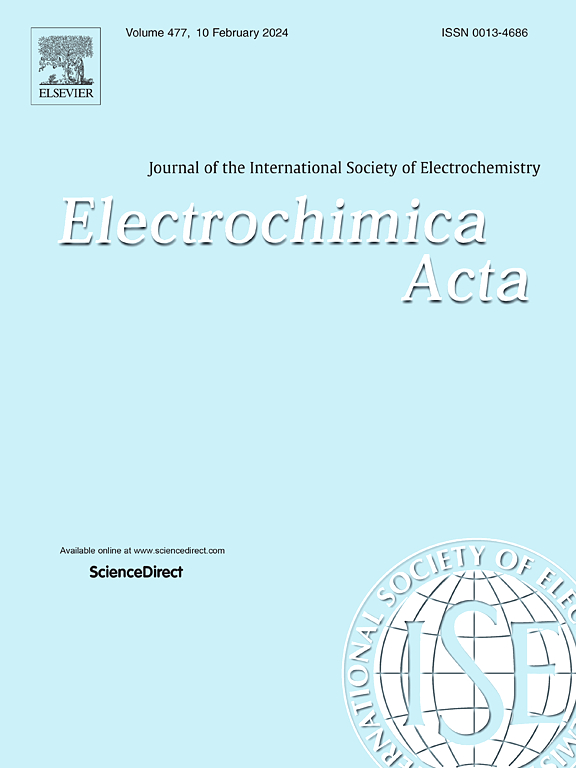在NFAPP中掺杂Al提高了钠离子的扩散和结构稳定性,为高倍率和长循环寿命的钠离子电池提供了新的材料
IF 5.6
3区 材料科学
Q1 ELECTROCHEMISTRY
引用次数: 0
摘要
Na₄Fe₃(PO₄)₂(P₂O₇)(NFPP)作为钠离子电池(sib)的正极材料,由于其无毒、经济成本和坚固的结构,引起了越来越多的兴趣。然而,由于导电性能相对较差,限制了其实际应用,影响了其电化学性能。引入离子半径较小的Al³+导致晶格收缩。这不仅最大限度地减少了钠离子传输过程中的晶格畸变,而且显著提高了材料的结构稳定性。此外,在材料上涂上一层碳层可以显著提高其导电性。因此,优化后的NFPP表现出优异的钠离子扩散、增强的电子导电性和改进的结构完整性。研究结果表明,所制得的无化学计量、碳包覆的Na₄.₄Fe₃.₄Al₀.₁(PO₄)₂。₅P₂O₇/C阴极提供卓越的电化学性能。它在0.2℃时达到133毫安时的高比容量,在20℃时保持91毫安时的良好比容量,并表现出良好的循环稳定性,在50℃下循环2500次后仍能保持88%的初始容量。本文章由计算机程序翻译,如有差异,请以英文原文为准。
Al doping in NFAPP enhances sodium-ion diffusion and structural stability for high-rate and long-cycle life sodium-ion batteries
Na₄Fe₃(PO₄)₂(P₂O₇) (NFPP) has attracted growing interest as a cathode material for sodium-ion batteries (SIBs) because of its non-toxic nature, economic cost, and robust structure. However, its practical application is limited by relatively poor electronic conductivity, which affects its electrochemical performance. The introduction of Al³⁺ ions, characterized by their smaller ionic radius, leads to lattice contraction. This not only minimizes lattice distortion during the sodium ion transport process but also significantly enhances the structural stability of the material. Furthermore, coating the material with a carbon layer significantly boosts its electrical conductivity. Consequently, the optimized NFPP exhibits superior sodium-ion diffusion, enhanced electronic conductivity, and improved structural integrity. Research findings show that the formulated non-stoichiometric, carbon-coated Na₄.₄Fe₃.₄Al₀.₁(PO₄)₂.₅P₂O₇/C cathode delivers exceptional electrochemical performance.It achieves a high specific capacity of 133 mAh g⁻¹ at 0.2 C, maintains good rate capability with 91 mAh g⁻¹ at 20 C, and shows excellent cycling stability, preserving 88 % of its initial capacity after 2500 cycles at 50 C.
求助全文
通过发布文献求助,成功后即可免费获取论文全文。
去求助
来源期刊

Electrochimica Acta
工程技术-电化学
CiteScore
11.30
自引率
6.10%
发文量
1634
审稿时长
41 days
期刊介绍:
Electrochimica Acta is an international journal. It is intended for the publication of both original work and reviews in the field of electrochemistry. Electrochemistry should be interpreted to mean any of the research fields covered by the Divisions of the International Society of Electrochemistry listed below, as well as emerging scientific domains covered by ISE New Topics Committee.
 求助内容:
求助内容: 应助结果提醒方式:
应助结果提醒方式:


